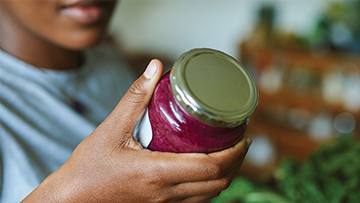Food labelling for consumers
Consumers can use labels to make more informed choices about the food they purchase. Learn how to read a food label, including best before dates and country of origin labelling.
Understanding food labels
How to read food labels so you can make informed choices.
How to identify Canadian food
What it means when a food is labelled as a product of Canada or made in Canada.
Report a labelling concern
Find out who to contact for your food-related complaint or concern.
Date labelling
Best before dates, expiration dates, packaged on dates, and more information about date labelling.
Allergen labelling
Identify priority allergens and gluten sources on food labels, get the latest food recalls.
Nutrition labelling
Nutrition facts table, front-of-package nutrition symbol, list of ingredients and nutrition claims.
Origin labelling
Origin claims and when it's mandatory to indicate the country of origin on food labels.
Organic food labels
Rules for displaying organic information on food labels.
Supplemented foods
What are they and how to read a supplemented food label.
Genetically engineered foods
Labelling of genetically engineered foods in Canada.
Irradiated foods
What is irradiated food, is it safe, and how to identify it.
Food fraud
How to spot it, where to report it and what the CFIA is doing to combat it.
Features

Understanding the dates on our food
On this podcast, labelling expert Laura Reid helps us understand the different dates on our foods.

Check labels for food bought online
How online grocery shopping is impacting Canadians living with food allergies.
Contributors

